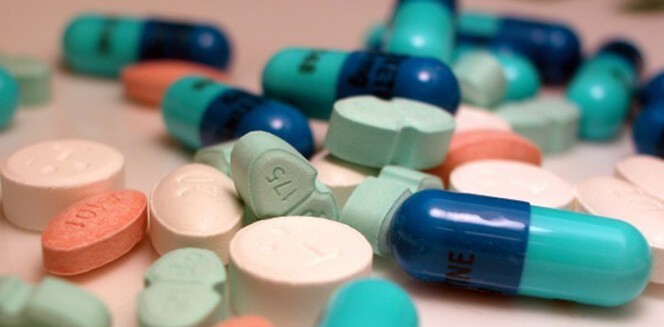Better Opportunities for Biosimilars Market Than Their Generics

8 Jun
2016
A biosimilar, could be referred to any complex, which is an adaptation of any original biologic product. The similarity context doesn’t really work well for these compounds as they are not identical to their reference drugs. Individual patents have to be acquired by the developers to protect their intellectual rights.
As per the analytical experts at Allied Market Research, the global Biosimilars Market growth graph, which was initiated earlier this decade, shall witness an exponential curve from here on. The Biosimilars Market is forecast to reach $35 billion by 2020, which accounted for $1,358 million back in 2013. The forecast on substantial expansion of the industry, growing at a CAGR of 60.8% through 2014 to 2020, is accountable to various factors.
Greater market penetration with clearer regulatory pathways in developed regions is primary to all driving factors. Rising consumer expectation for cost-effective treatments that are safe as well is another. While the need for all this lies within amplified prevalence of chronic disorders. Assisted by single use technologies, companies have been able to enhance product quality and optimize development costs.
Analysts approach to biosimilars market
As per a report published by Allied Market Research, more than 10 best-seller biologics with annual sales of $60 billion would expire in the span of four years.
"Biosimilars developers have been using emerging markets with less intellectual property protection as their launch pad for established markets" say AMR analysts. "With regulatory framework maturing in established markets, it will be easier for manufacturers to quickly enter into such markets" they add.
However, vendors that hail from developing regions find greater profit prospects in matured avenues.
"Once you start getting into (these) developed markets at much higher prices than generics, your business profitability increases and you get the comfort level that you are getting payback," says Kiran Mazumdar Shaw, Chairman and Managing Director of Biocon.
This statement comes from the organization when the industry stands witness to fresh collaboration between Mylan and Biocon to commercialize bio comparable drug of Trastuzumab in India, and Biocon gains Japanese approval for its Glargine. With Pegfilgrastim and Adalimumab added to their insulin analog list, the company looks forward to a voluminous opportunity of $35 million.
Observation of regional growth patterns
IMS Institute for Healthcare Informatics, presented a study indicating towards a market potential of 56 pipeline drugs. These shall assist health systems in the U.S. and Europe save up to an estimated $110 billion through 2020.
Europe has clearly been the earliest, and has emerged the strongest market, when it comes to inception of subsequent entry biologics. Not just manufacturing, but regional markets within Europe pose highest sales opportunities with its consistently huge demand figures.
The U.S market, despite its instrumental research activities for technology development in biologics, has been slow to adopt the bio comparable drugs. The subsequent entry biologics in U.S. scenario is as recent as the introduction of Sandoz’s Zarxio, which received its approval in 2015. Inflectra by Celltrion, which is a biosimilar to Remicade (Janssen's innovator), received FDA approval in April, 2016. Although, dispersed sources could confirm several other names, which await FDA approvals later this year.
It is of high importance that patients become comfortable with the idea of biosimilars for developing markets to gain traction. Among other factors that shall promote uptake of follow-on pharmaceutics, governmental policies and customer outlook are elementary. Also, medical practitioners need to be completely aware of both its availability and purpose, for regular prescriptions.
Future industry prospects against all odds
A more detailed analytical characterization of the products is required to establish their efficacy and safety. Protracted testing cycles during pre-clinical and clinical stages result in longer gestation time period to develop bio comparable drugs. Fragmented regulations in regional markets have to gain clarity to attract adoptability. The future hints towards strong cost reductions, owing to the due cut-throat competition. Strategic collaboration globally would have a positive impact on the market; however, they are restricted with the fear of patent-infringements.
Important market segments that are likely to grow during the forecasts period are Follitropins, Interferons, and Insulin biosimilars. Erythropoietins are expected to generate significant revenue due to patented biologics. Oncology disorder is leading the market due to high priced drugs. However, those complexes developed for autoimmune diseases & chronic and blood disorders would grow at the fastest rate.

Akhilesh Prabhugaonkar
Author's Bio- Akhilesh Prabhugaonkar holds a bachelor’s degree in Electronics Engineering from the reputed Vishwakarma Institute of Technology. He has a special interest in the fields of forensics, world history, international relations and foreign policy, sports, agriculture, astronomy, security, and oceanography. An ardent bibliophile and melophile, Akhilesh loves to write on topics of his interest and various other societal issues. This love for writing made him enter the professional world of content writing and pursue his career in this direction.
Avenue: Entire Library membership of Allied Market Research Reports at your disposal
- Avenue is an innovative subscription-based online report database.
- Avail an online access to the entire library of syndicated reports on more than 2,000 niche industries and company profiles on more than 12,000 firms across 11 domains.
- A cost-effective model tailored for entrepreneurs, investors, and students & researchers at universities.
- Request customizations, suggest new reports, and avail analyst support as per your requirements.
- Get an access to the library of reports at any time from any device and anywhere.
Related Post
-
How are Submarine Cables Transforming Global Connectivity with Enhanced User Experience?
-
Endoscopy Procedures: Transformations in Techniques and Applications
-
AI-Powered Video Analytics: How the Product Actually Works for enterprises
-
Painting Robots: Transforming Precision Coating and Creative Applications
-
Innovations in Pharmacovigilance Systems Advancing Patient Safety
-
Understanding Edge Security: Keeping Data Safe Near the Source
-
Exploring the Use and Advancements of 3D Laser Scanners in Professional Applications
-
Reinforcing Industrial Controls with Smarter Tools and Training








